20 Calming Color Schemes for Your Meditation Room (You’ll Love #12!)
Creating a meditation room is all about crafting an oasis of peace within your home. The colors you choose can significantly influence your ability to relax and focus during meditation. Calming colors help to enhance your mood and create a serene environment that can transport you away from the chaos of daily life. With so many beautiful colors to choose from, finding the perfect palette can be both exciting and overwhelming.
In this guide, we dive into 20 calming color schemes that will transform your meditation space into a tranquil haven. Each color scheme is thoughtfully curated to foster relaxation and mindfulness. Whether you prefer soft pastels or muted earth tones, you’ll find inspiration that speaks to your soul.
Let’s explore these delightful color palettes and discover how they can elevate your meditation practices!
Contents
- 1. Soft Sage Green
- 2. Tranquil Light Blue
- 3. Warm Cream
- 4. Muted Lavender
- 5. Earthy Terracotta
- 6. Soft Peach
- 7. Calming Seafoam
- 8. Elegant Dusty Rose
- 9. Gentle Gray
- 10. Earthy Olive Green
- 11. Pale Yellow
- 12. Nature-Inspired Green
- 13. Soft Coral
- 14. Gentle Mint
- 15. Deep Teal
- 16. Soft Almond
- 17. Gentle Charcoal
- 18. Light Blush Pink
- 19. Crisp White
- 20. Soft Indigo
1. Soft Sage Green
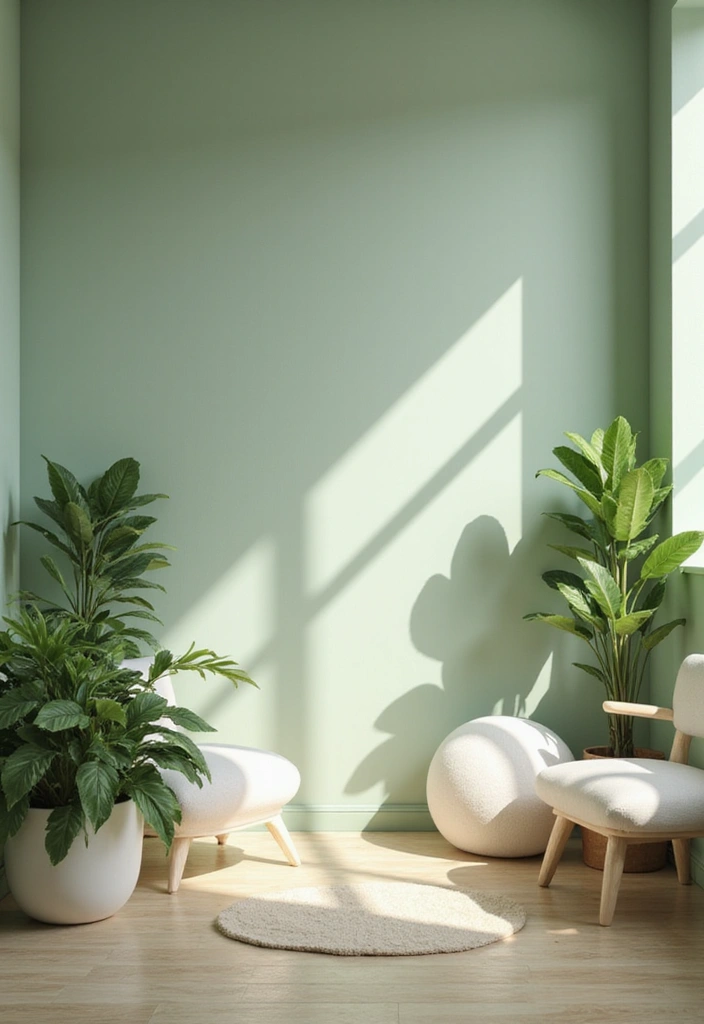
Soft sage green is a color that evokes the tranquility of nature. This gentle hue not only brings the outdoors inside but also promotes calm and concentration. Imagine sitting in a room painted in this muted green, surrounded by plants and natural elements. It’s like a breath of fresh air!
Here are some tips for using soft sage green in your meditation room:
– Pair it with white or cream accents to brighten the space.
– Add wooden furniture to enhance the natural feel.
– Incorporate plush greens through plants or textiles such as throw pillows.
The overall effect is soothing and inviting, perfect for deep meditation sessions.
2. Tranquil Light Blue
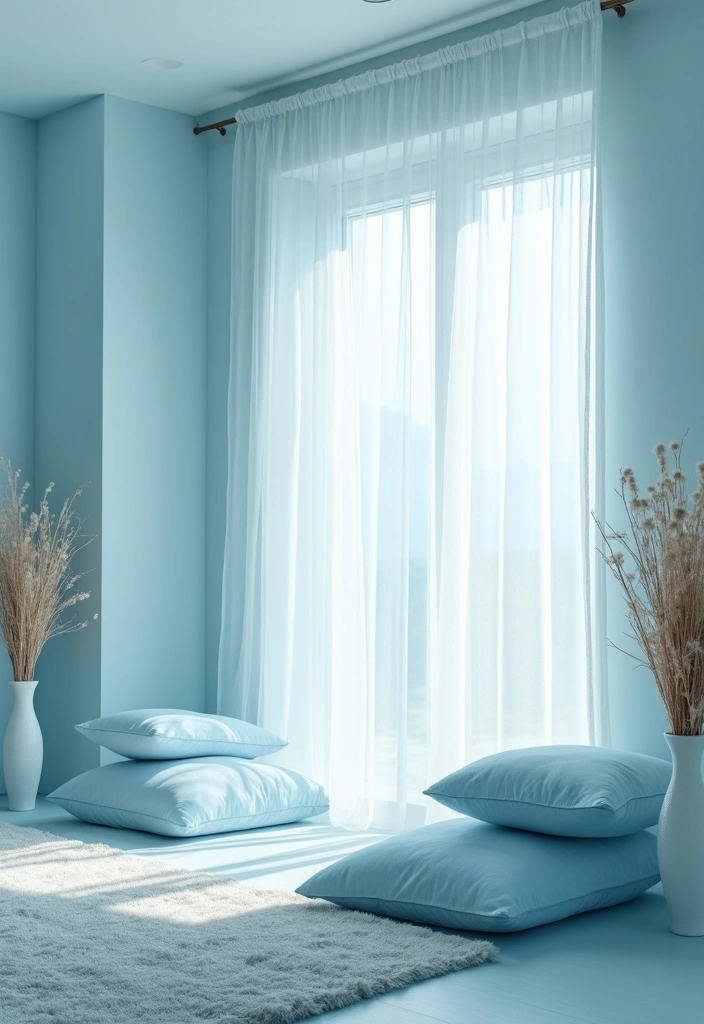
Light blue is synonymous with serenity and clarity. It’s like the sky on a crisp morning, inviting you to breathe deeply and relax. This color works beautifully in meditation rooms as it can help lower heart rates and reduce anxiety.
To enhance the calming effects of light blue, consider these suggestions:
– Combine light blue with shades of white and beige for a fresh, airy feel.
– Use soft fabrics like cotton or linen for cushions and curtains to add texture.
– Incorporate calming imagery, like gentle waves or clouds, through wall art.
The result is a room that feels open and peaceful, perfect for mindfulness practice.
3. Warm Cream
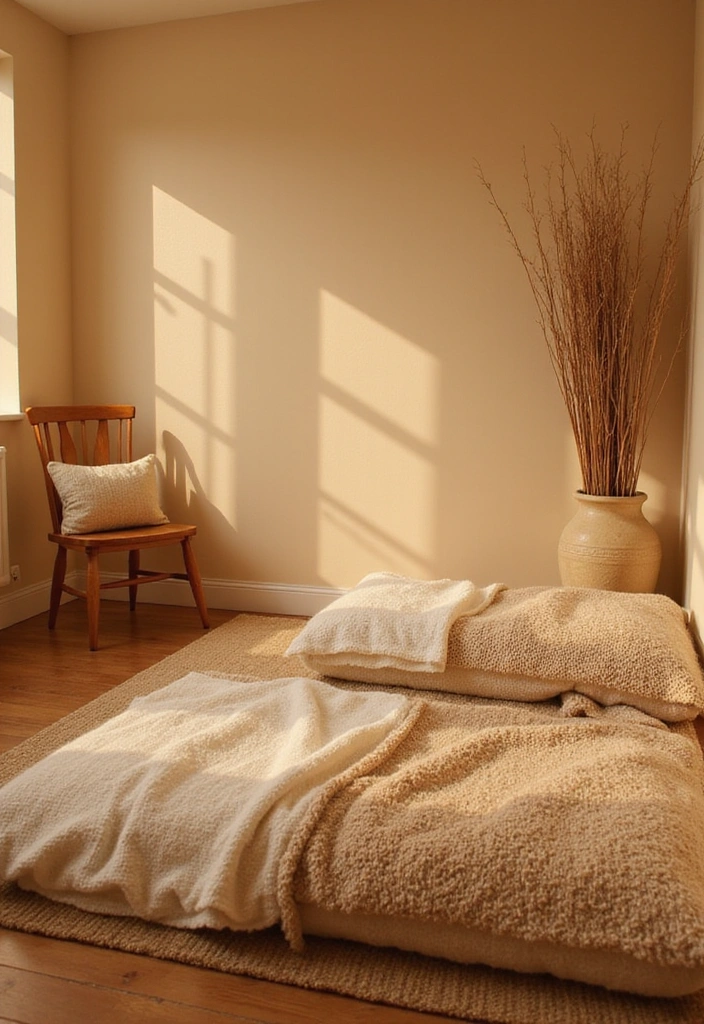
Warm cream is an excellent choice if you want a neutral backdrop that feels cozy and inviting. This versatile color promotes warmth and comfort, making it an ideal setting for meditation.
Here’s how to maximize the warmth of cream:
– Add layers through textured textiles like knitted blankets and soft rugs.
– Incorporate warm wood tones in furniture and decor to add depth.
– Use dim lighting to enhance the cozy vibe, creating an inviting space for relaxation.
With warm cream, you’re setting up a soothing environment that feels like a gentle hug, perfect for unwinding after a long day.
4. Muted Lavender
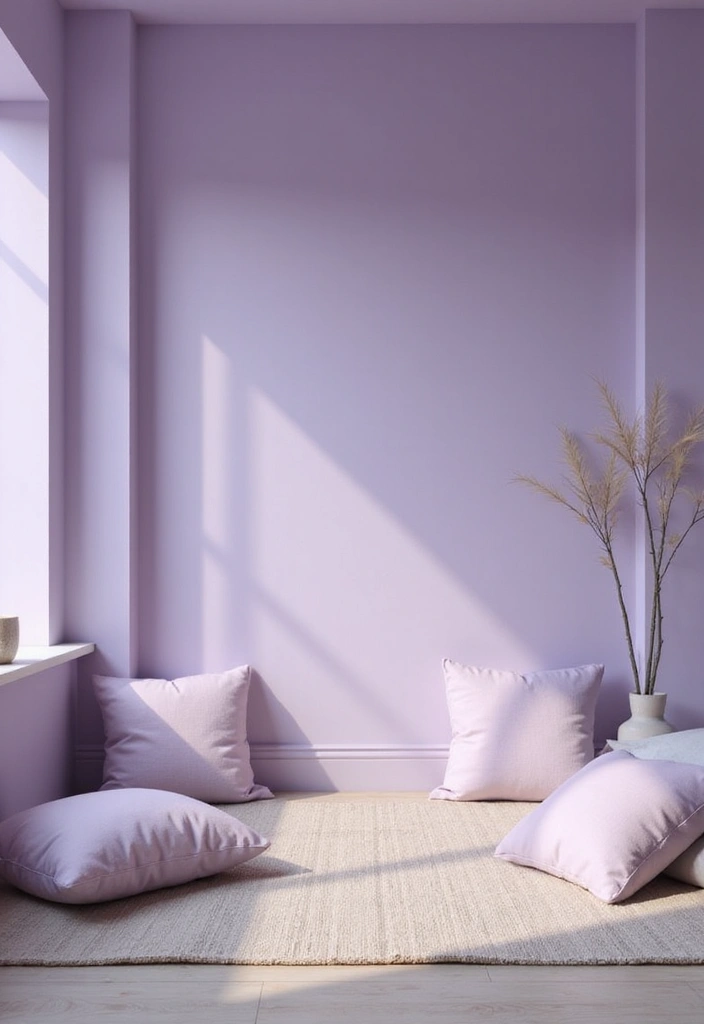
Muted lavender has calming properties that can ease stress and anxiety. This soothing color is perfect for creating a peaceful meditation space where you can escape from the world.
To work with muted lavender:
– Combine it with white or soft gray for a chic and modern look.
– Use accent pillows or throws in complementary colors like soft pink or cream.
– Incorporate calming scents through lavender essential oils to enhance the experience.
Its subtle yet powerful energy makes muted lavender ideal for enhancing mindfulness and creating a space of reflection.
5. Earthy Terracotta
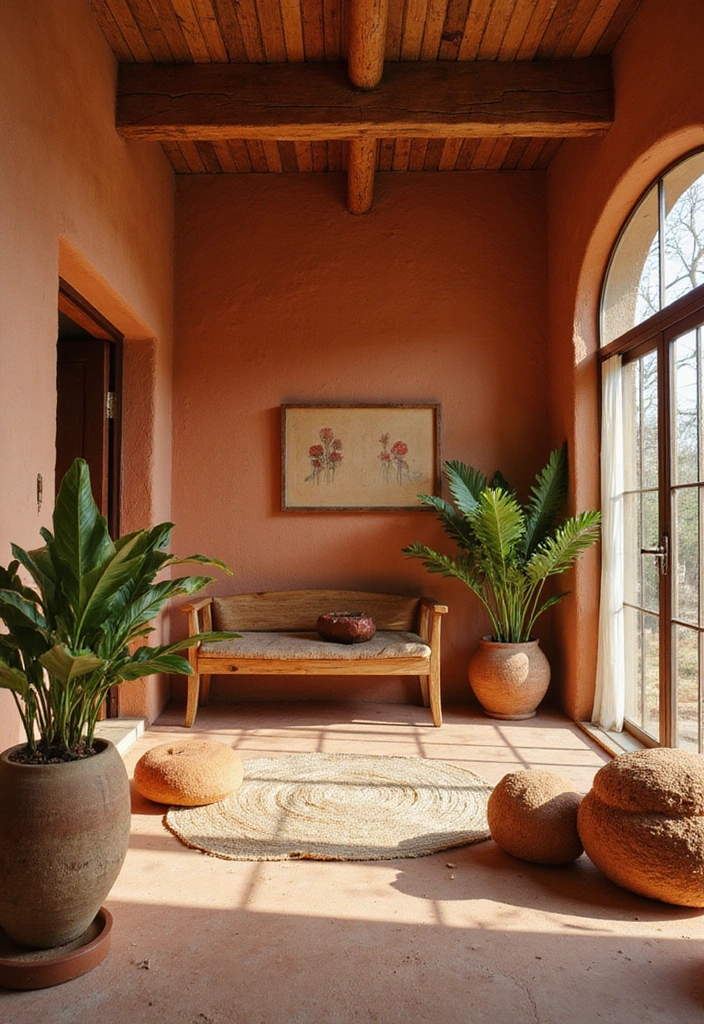
Terracotta brings warmth and grounding energy to your meditation room. This earthy hue connects you to nature and promotes a sense of stability, which is especially beneficial during meditation.
For using terracotta effectively:
– Pair it with soft neutral colors like beige or white for balance.
– Incorporate natural elements like wooden furnishings or stone decor.
– Use clay pots for plants, which echo the terracotta theme and bring life into the room.
The result is a room that feels rooted and nurturing, enhancing your meditation practice.
6. Soft Peach
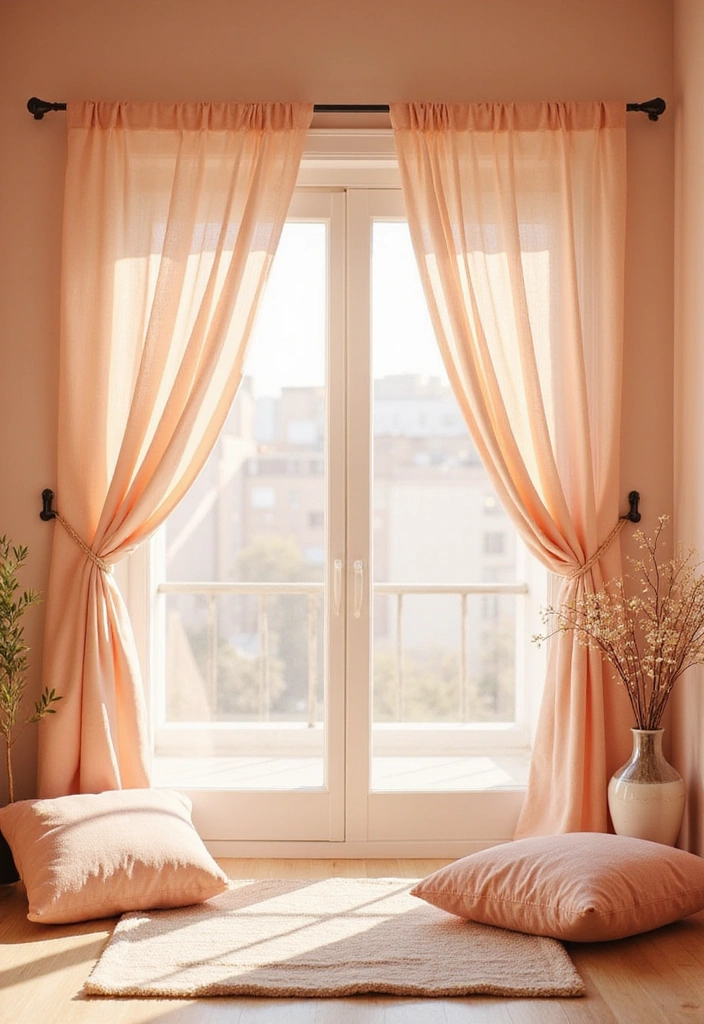
Soft peach is the perfect blend of warmth and lightness. This gentle color creates an uplifting and cheerful atmosphere, making your meditation practice feel more inviting.
To enhance the use of soft peach in your space:
– Combine it with soft whites and light grays to keep things airy and bright.
– Use peach-colored textiles like yoga mats and cushions for a cohesive look.
– Add wooden elements to keep the warmth of the peach alive while grounding the space.
Soft peach is ideal for creating an environment that inspires positivity and openness.
7. Calming Seafoam

Seafoam is a refreshing color that mirrors the softness of ocean waves. It’s both calming and invigorating, creating an environment perfect for meditation and relaxation.
To incorporate seafoam into your meditation room, try these:
– Use it as a wall color paired with sandy beige accents.
– Add textures through soft rugs and cushions in varying shades of blue and green.
– Use natural materials like driftwood or shells as decor for an ocean-inspired feel.
The result is a sea-inspired sanctuary that calms the mind and invites tranquility.
8. Elegant Dusty Rose
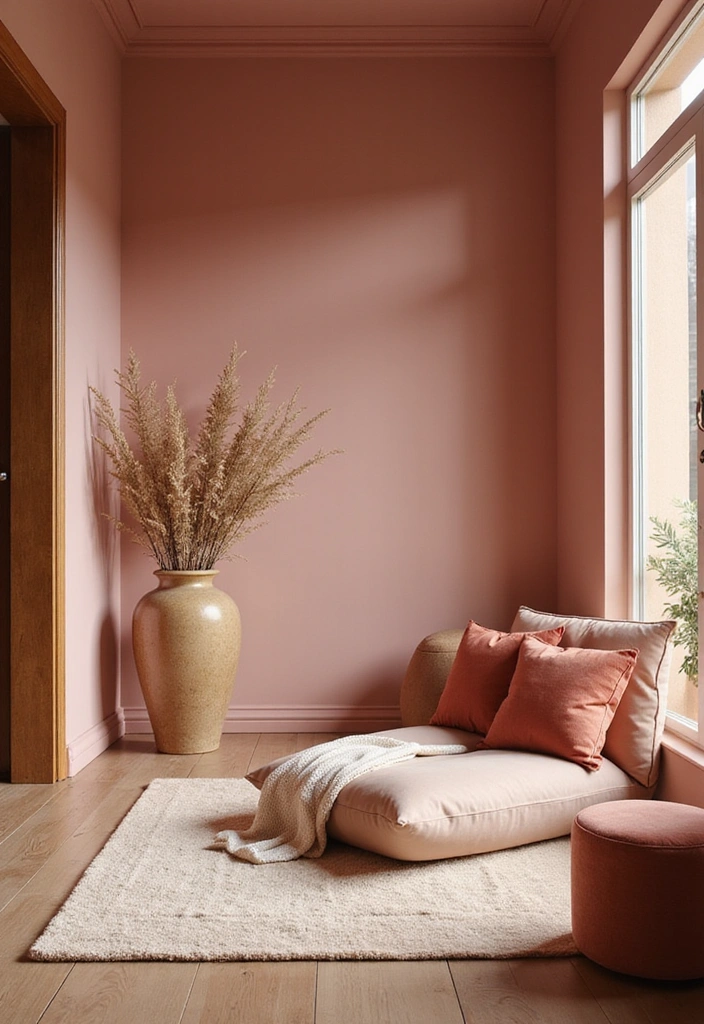
Dusty rose is a sophisticated color that brings a sense of warmth and intimacy to your meditation room. Its understated elegance makes it perfect for creating a calming atmosphere.
To enhance dusty rose:
– Pair it with muted greens or soft browns for a balanced look.
– Use gold or brass accents for an elegant touch without overpowering the serenity.
– Incorporate soft fabrics like velvet for pillows and throws that add luxury and comfort.
This color fosters a nurturing environment that encourages self-reflection and peace during meditation.
9. Gentle Gray
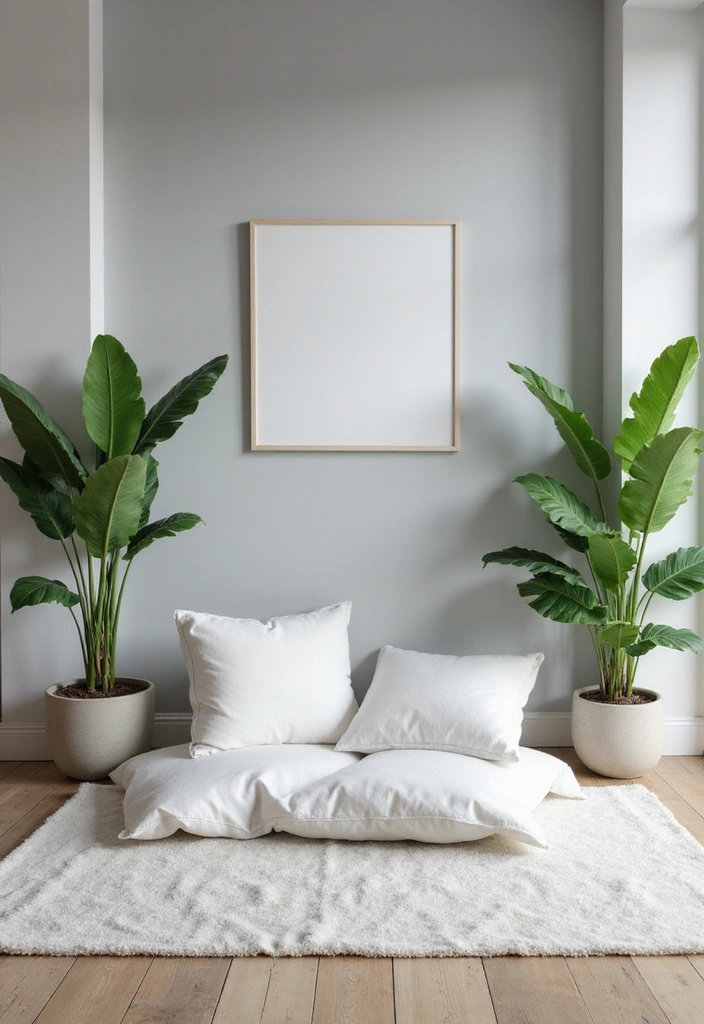
Gentle gray is a neutral color that offers a calming presence without being too stark. It’s perfect for creating a serene backdrop for meditation and mindfulness.
To use gentle gray effectively:
– Combine with soft white and muted pastels to keep things light and airy.
– Incorporate textures through soft throws and natural fiber rugs to add warmth.
– Use plants to bring in a pop of color and freshness against the gray background.
The result is a chic and modern meditation space that promotes clarity and peace of mind.
10. Earthy Olive Green
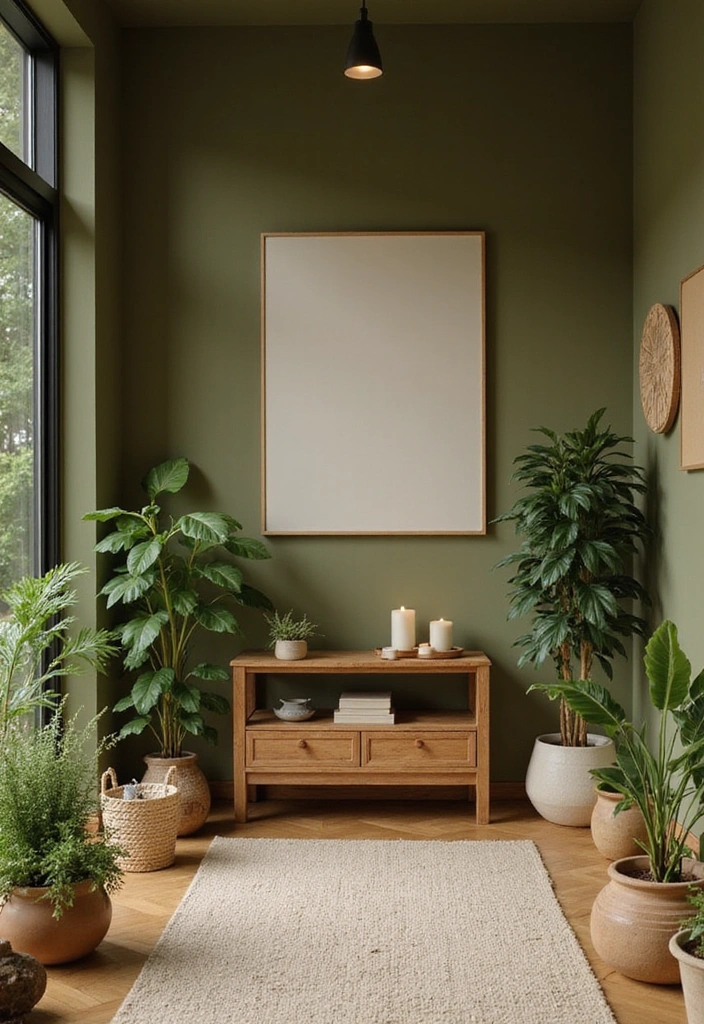
Olive green offers a deep connection to nature and a sense of grounding. It encourages introspection and stability, making it ideal for a meditation room.
Here’s how to work with olive green:
– Pair it with sandy beige or soft browns to enhance its earthy feel.
– Use natural materials like jute for rugs or wooden pieces for furniture.
– Incorporate plants to bring life and freshness into the space.
The result is a calming and nurturing environment that promotes deeper meditation practices.
11. Pale Yellow
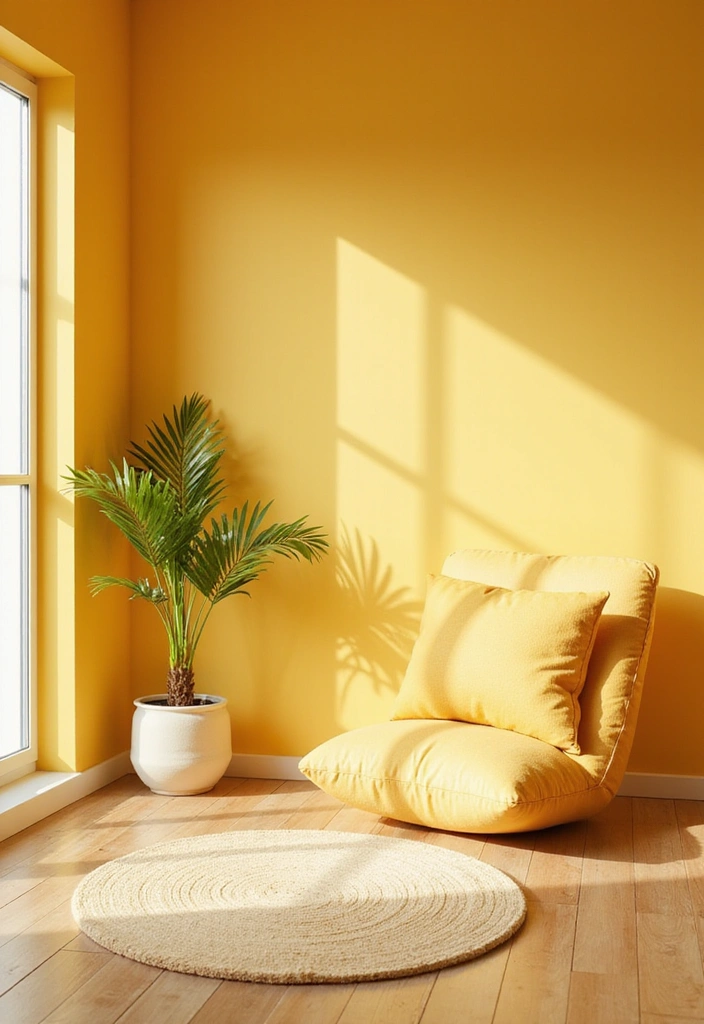
Pale yellow is a cheerful and uplifting color that can brighten your meditation room without being overwhelming. It encourages positivity and joy, making it a lovely choice for creating an inviting space.
To enhance pale yellow in your meditation room:
– Pair it with soft grays or whites for a fresh, balanced look.
– Incorporate cheerful patterns in textiles or wall art to inspire happiness.
– Use warm lighting to soften the yellow, creating a cozy and uplifting environment.
Pale yellow creates a happy and welcoming atmosphere, perfect for your meditation journey.
12. Nature-Inspired Green
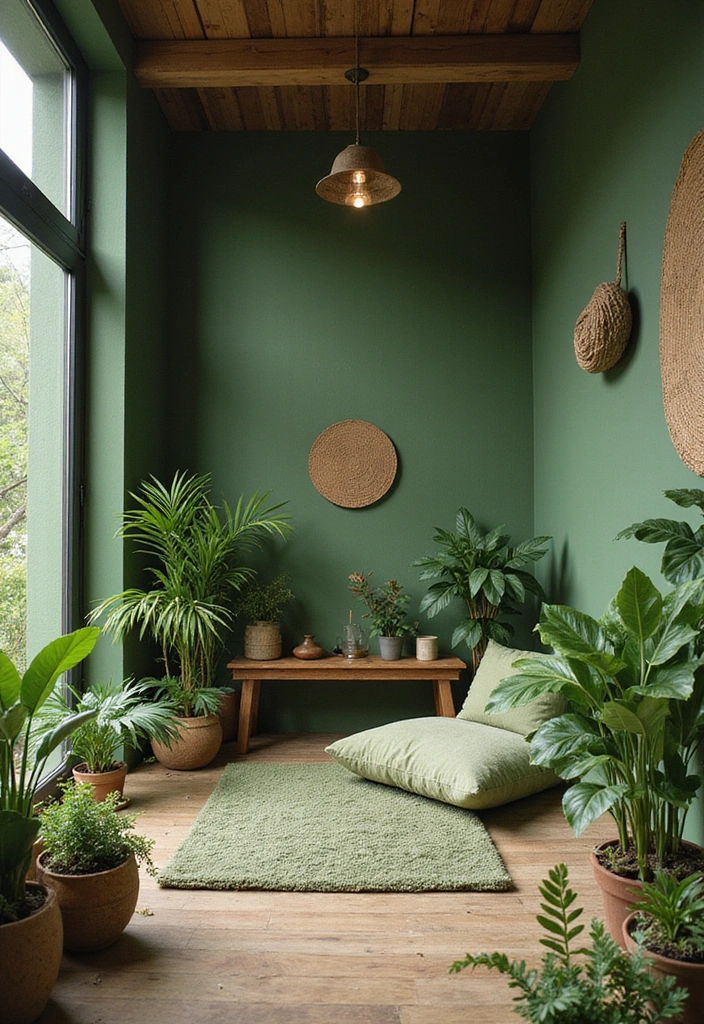
Nature-inspired green hues are perfect for evoking a sense of harmony and connection to the earth. These shades can range from leaf green to deeper forest tones, all offering calming and restorative qualities.
To utilize nature-inspired greens:
– Pair with earth tones like browns and muted yellows for a cohesive look.
– Use natural materials like bamboo or stone for furniture and decor.
– Incorporate plenty of plants to enhance the green theme and purify the air.
This color scheme not only enhances relaxation but also supports a mindful connection to nature, perfect for meditation.
13. Soft Coral
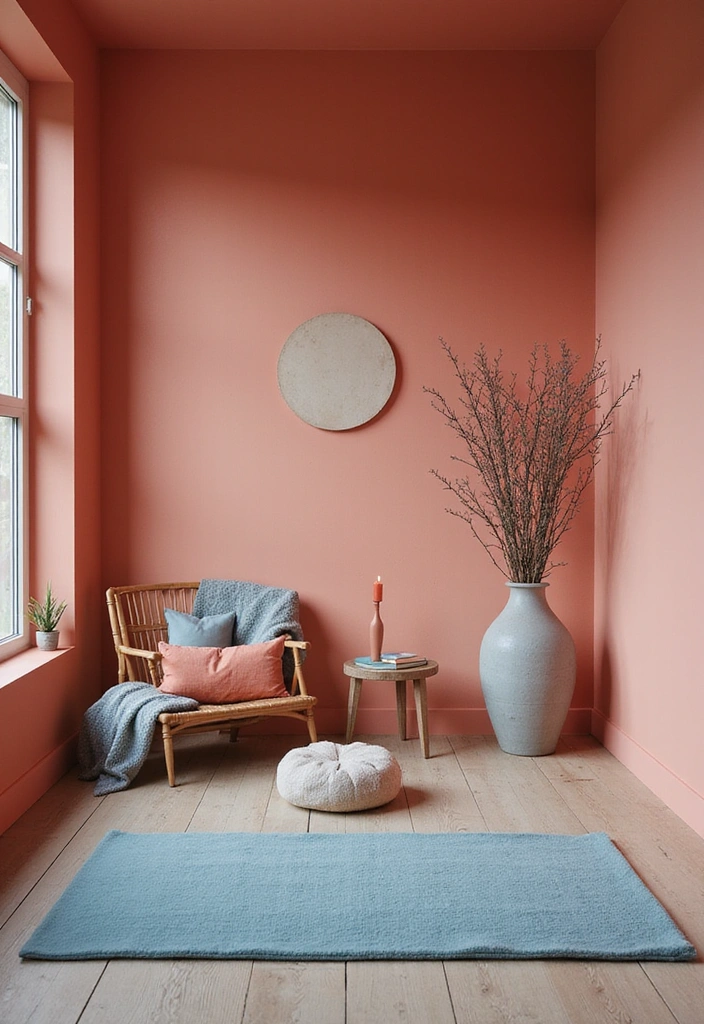
Soft coral adds a vibrant yet soothing presence to your meditation room. This inviting color promotes warmth and comfort while keeping the space lively.
To seamlessly incorporate soft coral:
– Pair it with muted blues or soft grays for a balanced color palette.
– Use coral accents in pillows or artwork to create pops of color without overwhelming the room.
– Incorporate natural textures like woven baskets or wooden decor for warmth.
Soft coral can create an inspiring atmosphere that encourages creativity and a positive mindset during meditation.
14. Gentle Mint
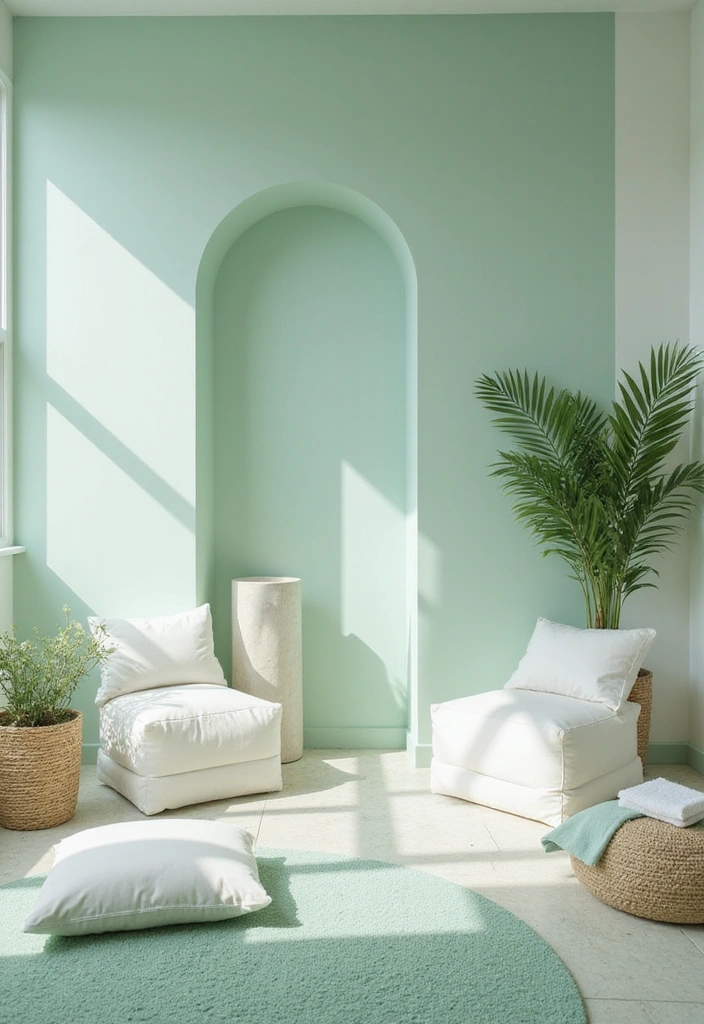
Gentle mint is a refreshing and calming color that brings a touch of nature indoors. It’s perfect for creating a spa-like atmosphere in your meditation room.
To create a soothing mint-inspired space:
– Combine it with soft white and sandy tones for a light, airy feel.
– Use natural materials like rattan for furniture and decor to enhance the organic feel.
– Incorporate calming scents through mint essential oils or candles.
The result is a serene, refreshing environment where you can unwind and connect with yourself.
15. Deep Teal
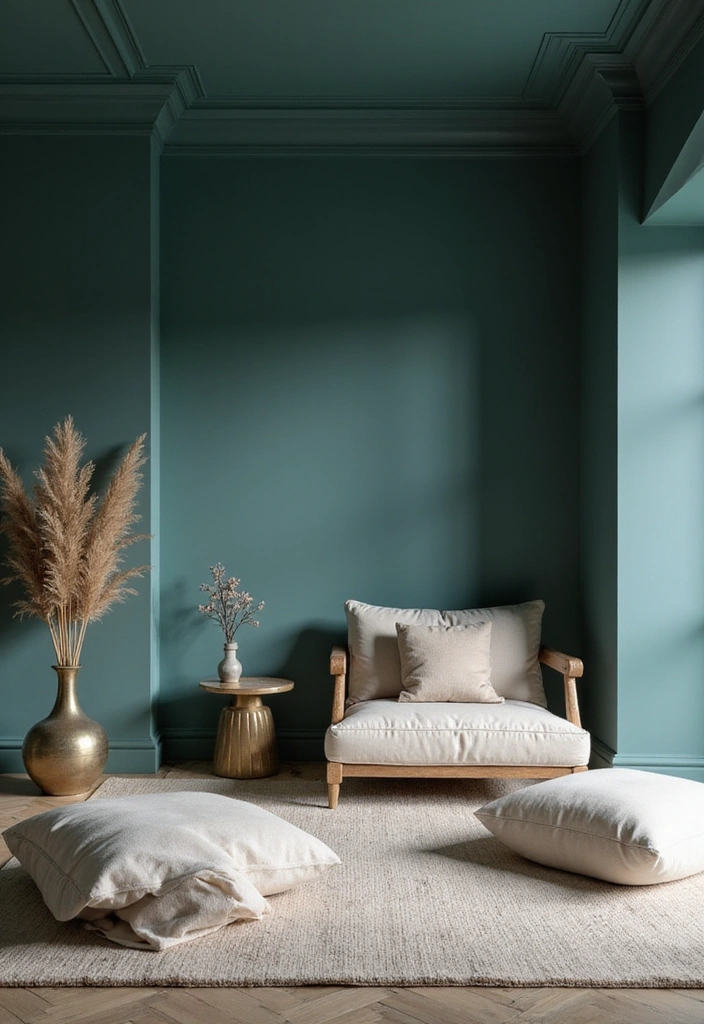
Deep teal is a bold yet calming color that evokes a sense of depth and tranquility. It can create a serene environment in your meditation room while also making a strong design statement.
To integrate deep teal:
– Pair it with soft neutrals like beige or soft gray for balance.
– Use plush textiles in lighter shades to soften the overall look.
– Incorporate metallic accents like gold or copper for a touch of elegance.
Deep teal can provide a calming backdrop for meditation, inspiring deep focus and reflection.
16. Soft Almond
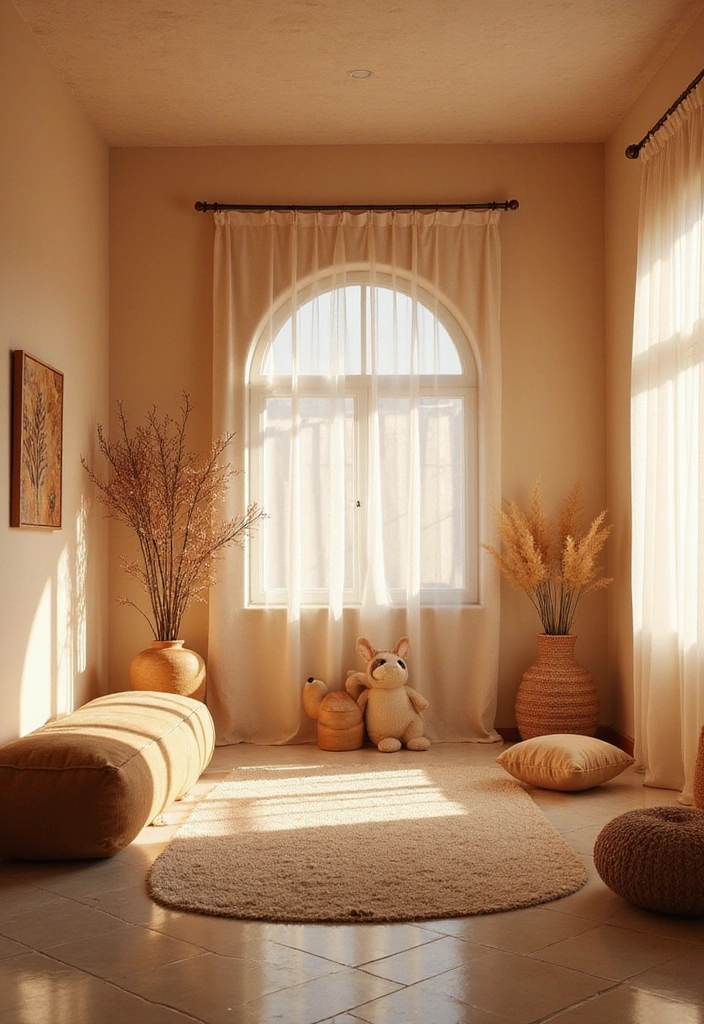
Soft almond is a warm, peachy beige that offers a comforting and inviting atmosphere. This color creates a nurturing environment for meditation and relaxation.
To effectively use soft almond:
– Pair it with warm browns and soft whites for a cozy feel.
– Add soft textures through plush rugs and pillows for comfort.
– Incorporate wooden elements to enhance the warmth.
Soft almond is an excellent choice for creating a loving and calming space where you can truly unwind.
17. Gentle Charcoal
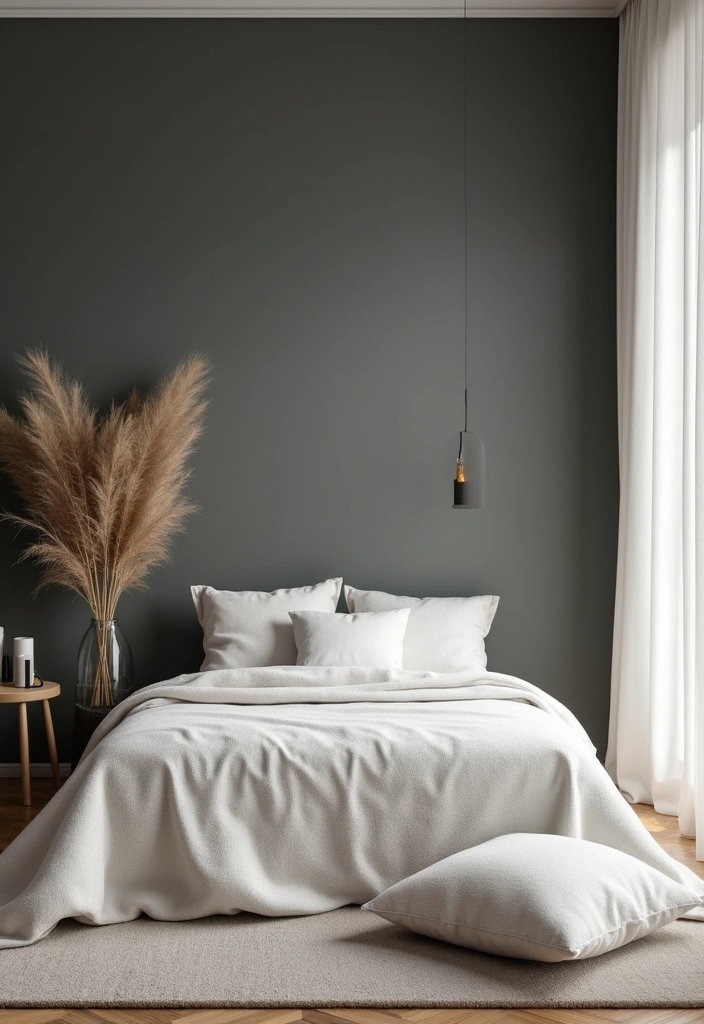
Gentle charcoal offers a modern twist on traditional calming colors. It’s a deep, muted tone that brings elegance and sophistication while still promoting a peaceful environment.
To use gentle charcoal:
– Pair it with lighter colors like soft white or pastel accents for a balanced look.
– Incorporate textures through throws and cushions for warmth.
– Use soft lighting to create a cozy ambiance that invites relaxation.
Gentle charcoal can create a chic and calming atmosphere that encourages mindfulness during meditation.
18. Light Blush Pink
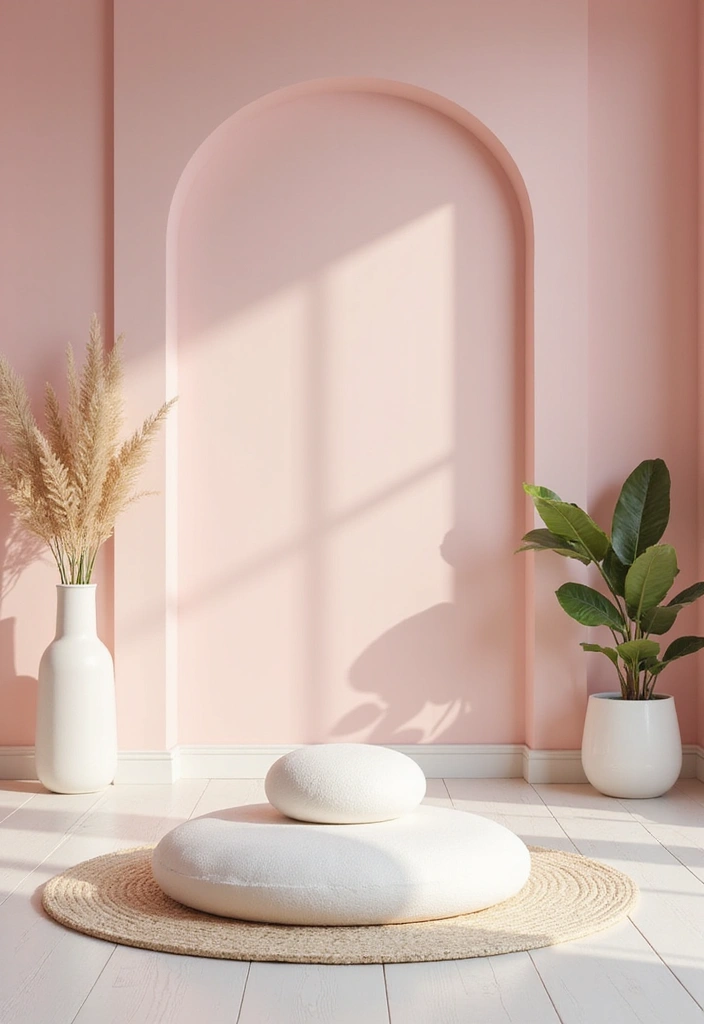
Light blush pink is a soft and romantic color that brings warmth and tenderness to your meditation room. It’s perfect for creating a nurturing environment that feels inviting and safe.
To enhance light blush pink:
– Pair with white for a fresh, clean look.
– Incorporate gray or gold accents for added sophistication.
– Use soft fabrics in blush tones for cushions and throws to add comfort.
This color encourages self-love and gentleness, making it an ideal choice for your meditation practice.
19. Crisp White
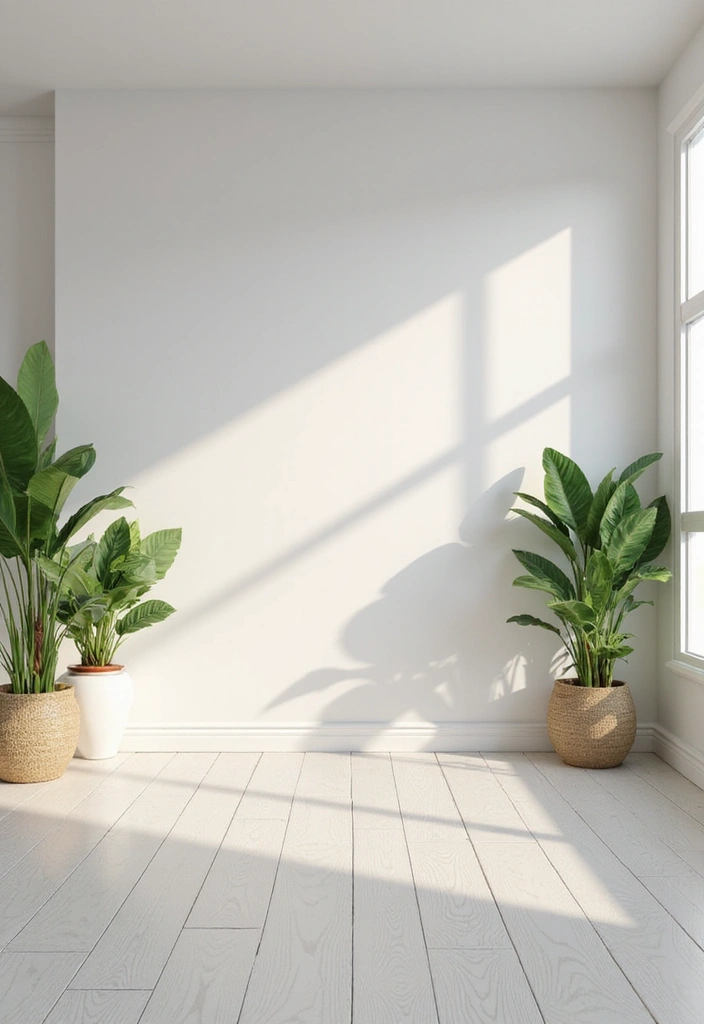
Crisp white is timeless and versatile, making it a great choice for a meditation room. This color creates an open and airy feel, allowing light to bounce around the space.
To maximize the impact of crisp white:
– Use it as a base color and add pops of color through decor and textiles.
– Incorporate natural materials to prevent the space from feeling too sterile.
– Use plants to introduce life and color into the room.
Crisp white promotes clarity and focus, setting the stage for effective meditation sessions.
20. Soft Indigo
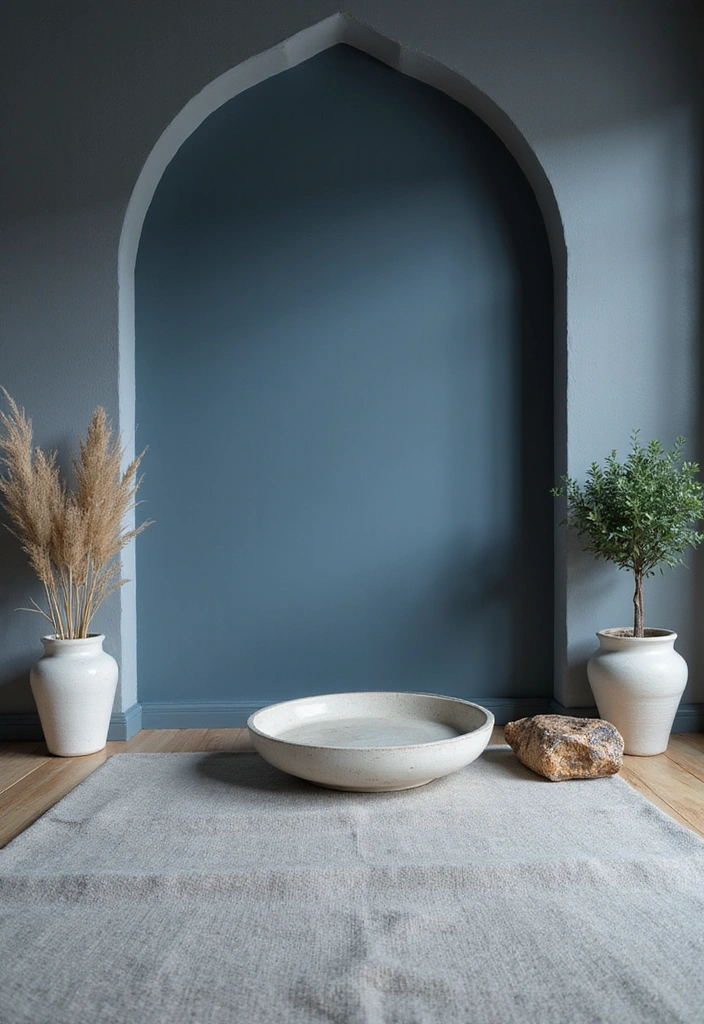
Soft indigo is a deep, calming color that encourages introspection and peace. It’s perfect for creating a serene environment for meditation and self-reflection.
Incorporate soft indigo in your meditation room by:
– Pairing it with light grays and soft whites for contrast.
– Using organic materials like cotton textiles to enhance comfort.
– Adding silver or metallic accents for a touch of luxury.
Soft indigo nurtures deep thought and calm, making it an excellent choice for your meditation practices.
Conclusion
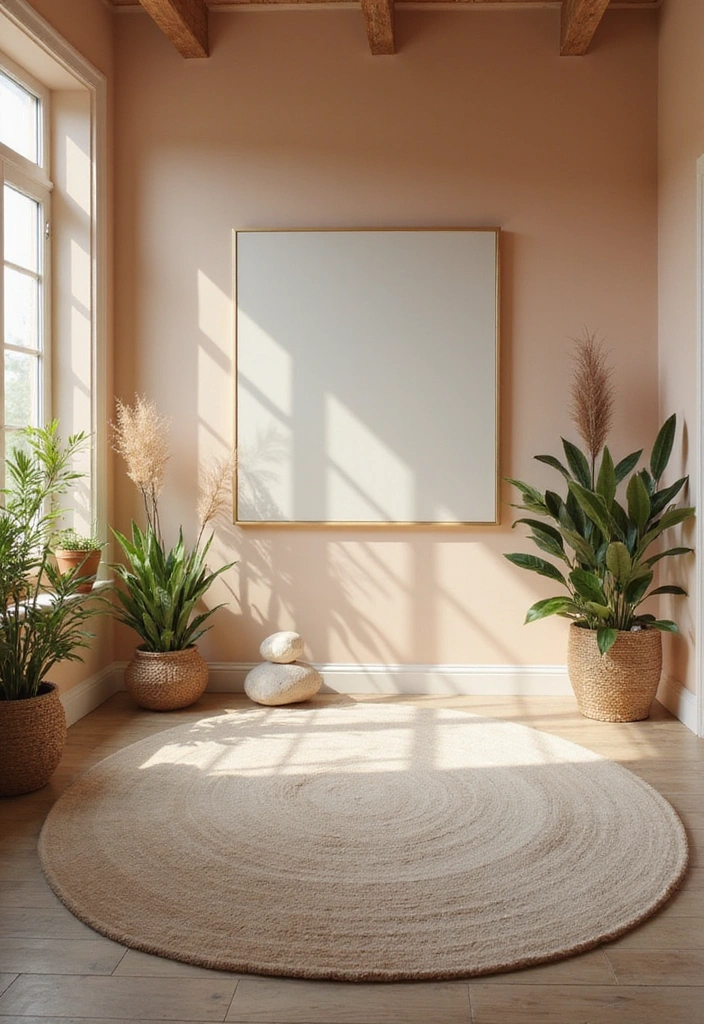
Choosing the right color scheme for your meditation room can make a world of difference in your practice. Each color brings its unique energy and mood, paving the way for deeper relaxation and mindfulness. Whether you prefer soft pastels or earthy hues, creating a calming environment tailored to your style is essential.
Take some time to explore these color schemes and find the one that resonates with you. Your meditation space should be a reflection of your inner peace, inviting you to unwind and reconnect with yourself. Happy decorating!
Frequently Asked Questions
What are the best meditation room colors to promote relaxation?
When it comes to meditation room colors, soft hues like light blue, muted lavender, and gentle gray are fantastic choices. These calming colors create a serene atmosphere that encourages relaxation and mindfulness. Consider shades like soft sage green or warm cream for a cozy feel, too!
How can I choose the right color scheme for my meditation room?
To choose the right color scheme, think about what emotions and energies you want to evoke during your practice. Calming colors like earthy terracotta or soft indigo can enhance tranquility, while brighter shades like pale yellow can uplift your mood. Test a few samples in your space to see how they make you feel before committing!
Are there specific colors that enhance mood during meditation?
Absolutely! Colors like soft peach and gentle mint can create an inviting atmosphere, enhancing your mood during meditation. Nature-inspired greens and calming seafoam are also great for fostering a sense of peace and connection with the earth. Choose colors that resonate with you personally for the best experience!
Can I mix different calming colors in my meditation room?
Definitely! Mixing calming colors can create a beautiful and harmonious space. For example, pairing soft lavender with gentle gray can add depth while maintaining tranquility. Just be sure to balance bold colors with softer tones to keep the atmosphere relaxing. Experiment with combinations that you love!
What tips do you have for painting my meditation room to enhance relaxation?
When painting your meditation room, opt for low-VOC or eco-friendly paints to keep the air quality clean. Consider using a matte finish to avoid glare and create a soft ambiance. Lightly textured walls can also add a calming dimension. Lastly, allow the paint to dry completely before decorating to keep your space fresh and inviting!

